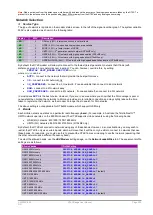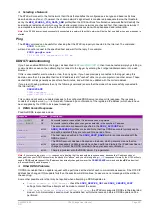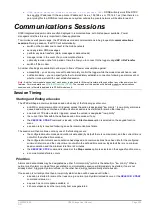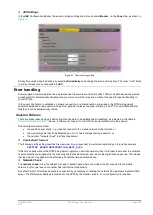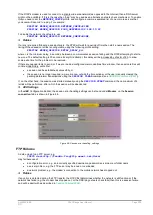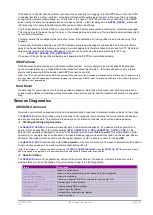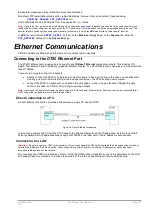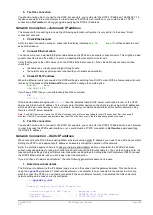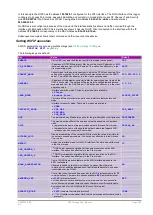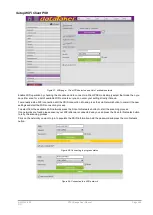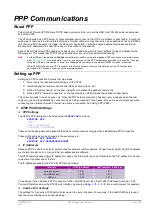
UM-0085-B09
DT80 Range User Manual
Page 231
RG
Email alarm messages will be retried four times then discarded.
By default, FTP/email data unloads will be retried indefinitely; however this can be limited if required using
PROFILE UNLOAD FTP_RETRIES=
num
which will delete the unload data file from the queue after
num
retries.
Note:
If a data file from an incremental unload (one which specified
start=new
) is abandoned, then the time period covered by the
failed unload will be missing from the data set on the FTP server, even if communications with the server subsequently recover. The
data for this time period will then need to be manually recovered, e.g. using the
dEX
web interface "retrieve data" function.
In
dEX
, the retry interval (
RETRY_DELAY_S
) is set on the
Ethernet
settings page, on the
Session
tab, while the
FTP_RETRIES
setting is on the
Advanced
page.
Ethernet Communications
All
DT80
models are fitted with an Ethernet port for network communications.
Connecting to the
DT80
Ethernet Port
The
DT80
's Ethernet port is designed to connect to any
10-BaseT Ethernet
compatible network. This includes 100-
BaseT (fast Ethernet) and 1000-BaseT (gigabit Ethernet) networks. The
DT80
Etherent port operates at a maximum data
rate of 10Mbps.
There are two ways to connect to a network:
•
directly connect the
DT80
to a single host computer using a "cross-over" cable. In this case you are effectively
creating a new mini-network, with just two devices connected – the
DT80
and the host computer.
•
connect the
DT80
to a spare port on an Ethernet hub, bridge or router, using a standard ("straight through)
cable. In this case the
DT80
will be joining an existing network.
Note:
many recent PC and switch/ router models incorporate "auto switching" Ethernet ports. Such devices may be connected to the
DT80
using either a standard or cross-over Ethernet cable.
Direct Connection to a PC
A direct Ethernet connection provides a link between a single PC and the
DT80
.
Figure 89: Direct Ethernet connection
In the above example, the PC and the
DT80
have both assigned themselves Auto-IP addresses, as there is no DHCP
server available. Auto-IP addresses always begin with 169.254; the latter part of the IP address is semi-random.
Connection to a LAN
Important:
Do not connect your
DT80
to the network until you’ve configured the
DT80
with a suitable IP address and subnet mask, or
selected the "automatic IP address" option. Connecting a device with an invalid or conflicting IP address may cause significant
disruption to the operation of the network.
By connecting the
DT80
to a local area network (LAN), the
DT80
will be accessible by any of the computers on the LAN,
and possibly also by computers on a wide area network or the Internet, depending on how the LAN is set up.




